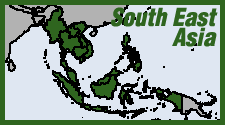 Laos was once a major opium producer—and now production is creeping up there again after eradication efforts had dramatically slashed it. But this time around authorities may take a more tolerant and realistic approach. Voice of America reported March 27 that the Asian Development Bank and other international donors helping Laos promote alternatives to opium production are actually listening to analysts who emphasize the reasons for the bounce in production. Poppy cultivation in Laos fell from a peak of 26,800 hectares in 1998 to 1,800 hectares by 2005 under an aggressive eradication program. In 2006 the Laotian government declared the country "drug free." Now, the UN Office on Drugs and Crime (UNODC) finds cultivation in Laos rose to some 6,200 hectares in 2014. However, while the far greater quantities of opium grown in neighboring Burma are largely processed into heroin for export, much of that in Laos is consumed locally for traditional and medicinal use by hill tribes in country's remote north.
Laos was once a major opium producer—and now production is creeping up there again after eradication efforts had dramatically slashed it. But this time around authorities may take a more tolerant and realistic approach. Voice of America reported March 27 that the Asian Development Bank and other international donors helping Laos promote alternatives to opium production are actually listening to analysts who emphasize the reasons for the bounce in production. Poppy cultivation in Laos fell from a peak of 26,800 hectares in 1998 to 1,800 hectares by 2005 under an aggressive eradication program. In 2006 the Laotian government declared the country "drug free." Now, the UN Office on Drugs and Crime (UNODC) finds cultivation in Laos rose to some 6,200 hectares in 2014. However, while the far greater quantities of opium grown in neighboring Burma are largely processed into heroin for export, much of that in Laos is consumed locally for traditional and medicinal use by hill tribes in country's remote north.
Cheikh Ousmane Toure, UNODC Laos country manager, said: "The opium growers are not bad people. They are people who are poor, who want to send their kids to school. They are not really doing trafficking. For a large number of them [opium] is used only for themselves." The northern homeland of the Hmong, Akha and Khmu peoples is the poorest area of Laos, with more than 40% of inhabitants living below the poverty line. Per capita income is as low $300 a year, in contrast to over $1,000 elsewhere in Laos. The eradication push has worsened the situation. In 2008 the World Food Program had to launch a two-year emergency assistance plan to meet food shortages in three provinces. UNODC admitted the economic situation of opium-producing communitiesis is often "precarious."
Consultant David Mansfield, writing for the Global Commission on Drug Policies, said eradication also pushes up the price of illicit drug crops, stimulating further production, and leading to "increasing levels of instability." Anthropologist David Feingold, with 40 years experience studying opium in Southeast Asia, emphasized how the poppy is integrated into the culture of the hill tribes. "It's the best drug they have that in terms of medicinal uses," he said. He added that a unit or "joy" of opium—about 1.6 kilograms—servies as an informal currency. "It was like American Express... don't leave home without it... you could cut off a particular weight and pay for things."
Southeast Asia continued to gain on Afghanistan as the world's top opium producer, according to the UNDOC, with production in the region rising for an eighth consecutive year, nearly tripling the total for 2006. The Southeast Asia Opium Survey 2014 found that Burma and Laos together had 63,800 hectares under opium cultivation in 2014, compared to 61,200 in 2013. The two countries produced an estimated 762 metric tons of opium, most of which was refined into an estimated 76 tons of heroin. Burma's Shan state remains the center of regional production, accounting for 89% of poppy cultivation in the "Golden Triangle" border region. In Laos, the survey confirmed poppy cultivation in the three northern provinces of Phongsali, Xiangkhoang and Houaphan. (See map.) While Laos, unlike Burma, is now at peace, its northern provinces share with Shan state the distinction of being a remote mountainous region inhabited by traditionally marginalized indigenous peoples. (UN News Centre, Dec. 8)
Meanwhile, a new and unsavory contraband trade appears to be emerging in Laos to fill the economic vacuum. Singapore's Straits Times notes a new report by the UK's Environmental Investigation Agency (EIA) finding that Chinese economic interests have established a trafficking network in endangered species in northern Laos. The country's "Golden Triangle Special Economic Zone," where the government is giving foreign investors a free hand in a bid to wean the region off the opium economy, has "effectively become a lawless playground" where Chinese companies carry out a "blatant illegal wildlife trade." The report especially names a sprawling resort and casino in Bokeo province run by the Hong Kong-registered Kings Romans Group, where tigers are kept in cages for display and menu items include tiger bone "wine" and the meats of endangered species. A restaurant in the complex is apparently offering bear paws, and various preparations of monitor lizards, pangolins, and assorted geckos, snakes and turtles. The Treasures of Laos website hails the resort as "Macao on the Mekong," boasting new golf courses, shopping centers and massage parilors. In a predictable irony, the identities of the investors have been kept secret, and UN officials have actually raised fears the mega-tourism project could be a scam to launder drug money.
Medicinal opium sounds a great deal more wholesome to us, thanks.
Cross-post to High Times







Recent comments
3 weeks 3 days ago
7 weeks 2 days ago
11 weeks 2 days ago
12 weeks 18 hours ago
22 weeks 18 hours ago
26 weeks 1 day ago
27 weeks 1 day ago
27 weeks 1 day ago
48 weeks 2 days ago
1 year 2 days ago